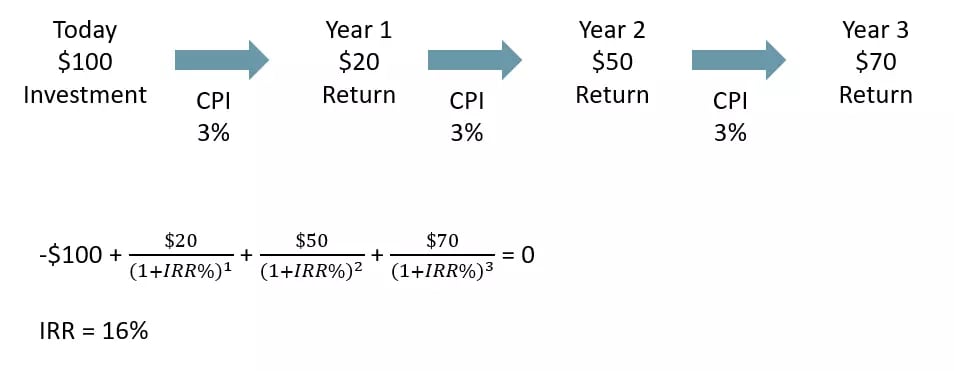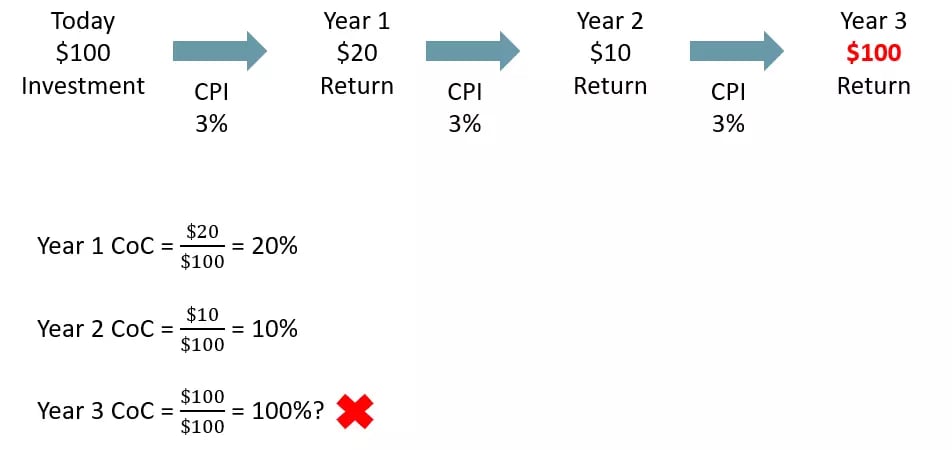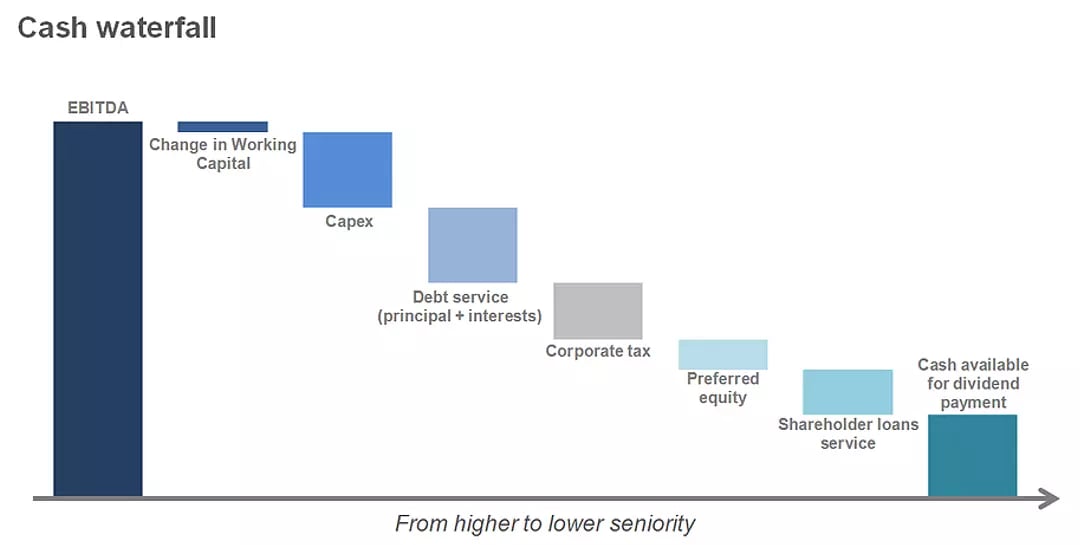Forbury | 4 January 2022


Understanding Commercial Real Estate Finance is important for everyone involved in the CRE asset lifecycle. We’ve created this article to cover some of the basic finance definitions such as NPV, IRR and waterfalls, alongside other finance related blogs.
Definition: How the investment is financed by using debt vs equity as a source of financial capital.
Example: A building (asset) that is worth $10 million can be financed by getting an $8 million loan from the bank and putting in $2 million of your own money. The benefit of using debt and equity to buy an asset is that when your asset grows, say to $100 million, you still only have to pay back the $8 million debt, giving you an equity of $92 million.
Definition: Consumer Price Index (CPI) measures the average change in prices over time that consumers pay for goods and services.
Time Value of Money - is $100 today still worth $100 in 1 year?
Meaning - inflation is the decline of purchasing power over time.
Example: let's say you have $100 today and you keep it for one year, while the CPI goes up by 3%. Today with $100 you can buy 100 chickens, however after one year, the prices go up to $1.03 per chicken, which means you can only buy 97 chickens. So, it’s better to buy the chickens today, rather than a year later if you can’t find a better investment. That's how you would work out the concept of time vs money.

Definition: Net Present Value (NPV) is the difference between the present value of cash inflows and the present value of cash outflows over time. It is a capital budgeting method used as part of a Cost-Benefit Analysis (CBA) to determine how profitable the investment is.
Example: In the example below, you invest $100 and every year there is a discount factor, we’ve applied a 3% CPI (different projects have different discount factors), and this gives us the NPV for the whole project, which gives us a profit of $30.60.

Definition: Internal Rate of Return (IRR) is the return on the cash flows based on the acquisition price, the exit price and all the cash flows and distributions in between. It is the rate of return that you would need to get on your money, say in the bank, to get the same equivalent return. It’s a metric used in financial analysis to estimate the profitability of potential investments. IRR is a discount rate that makes the NPV (net present value) of all cash flows equal to 0 in a DCF (discounted cash flow) analysis. Most often, the higher the IRR, the more desirable the investment is.
An investor would use Forbury to analyze what they put in on acquisition and see what they get out, and they would get two things: a stream of distributions, and the proceeds on the sale of the asset.
Example: In this example, you work a little bit backward, you still invest in $100 today and you will get returns every year but there is a break-even discount factor, where you compare against the IRR of 16% against the 3% CPI. If the IRR is less than 2% then it is not a good investment.
In this example, you work a little bit backward, you still invest in $100 today and you will get returns every year but there is a break-even discount factor, where you compare against the IRR of 16% against the 3% CPI. If the IRR is less than 2% then it is not a good investment.
Generally speaking, if you invest $100 and you get back $20, $50 and then $70, you get a total of $140, so you would make the assumption that you made a profit of $40. IRR also assumes that you would reinvest your returns every time. So, by the time it is Year 3, the discount factors kick in and the actual project profit of $30.60 is dragging all the future returns into today’s monetary value. You could say that an IRR is almost an averaging or compounding effect over the period of the project.
Definition: Cash on Cash Yield is a very basic concept; a simple calculation of cash return and it doesn’t consider time value and compounding effect. It uses your annual return each year, your distribution, and it gets divided by your initial investment.
Example:

In this example here you get a $20 return in Year 1, a $10 return in Year 2 and in Year 3 you get your $100 initial investment back. This doesn’t mean you get a 100% return, because you are getting a capital return, not an investment return. It is a similar concept to selling a house at the end of Year 2, instead of collecting rent. We’ve included CoC into our Forbury model because bankers like this metric. They like to know how much cash is coming in, to cover the interest.
Definition: A cash flow waterfall is a representation of the cash flow statement, rearranged to show priority, and placed in their order of seniority. It’s about who gets paid first and each level will likely have an IRR and NPV calculation. Image from: https://www.financialmodelingacademy.com/cash-waterfall
Image from: https://www.financialmodelingacademy.com/cash-waterfall
EBITDA: Earnings Before Interest, Taxes, Depreciation and Amortization, and is a measure of financial performance, bottom-line earnings, an alternative to net income.
Definition: Capital expenditures (capex) are the money used to add or improve a property, not including repairs or maintenance. Usually used for investment properties.
Example: let’s say you want to do some capex and put a new roof on your house. The decision on which source of fund you choose will affect your return as Opportunity Costs matter.
Option 1: take on additional debt
Option 2: use the cash income from the project
Option 3: top up this project with additional equity from your own bank account
To find out which option is the best, you can model this using Forbury’s Finance sheet, which shows transparent calculations.
Over the years, more features and functionality have progressively been added to Forbury's software. We are continuously thinking of better ways to leverage our property valuation tech for the benefit of our customers. Property professionals using Forbury gain increased accuracy and speed, empowering them to cover more of the market without additional resources and expense.
To learn more about how Forbury can transform your business, book a free demo.